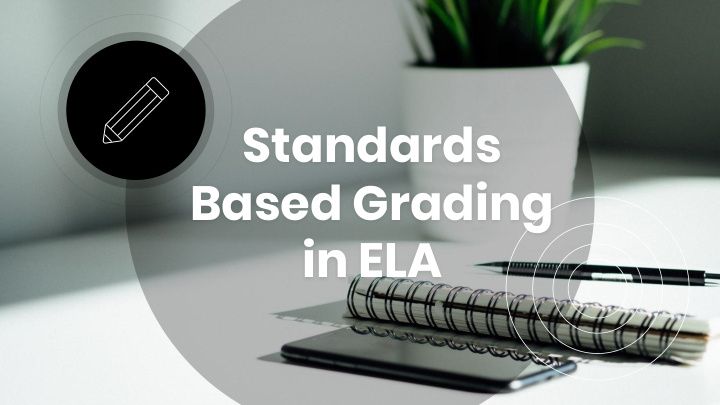



Standards Based Grading in ELA
Who am I? Jeff Winget Sophomore English Teacher Emery High School Email: jeff@3dgradebook.com Twitter: @talkingsbg Website: http://talkingsbg.com
The Big Ideas Why are we here?
"From the moment students enter a school, “ the most important factor in their success is not the color of their skin or the income of their parents, it's the person standing at the front of the classroom." --Barack Obama
3 Core Principles 1. The teacher is the most important asset in the classroom. 2. Student grades should be an accurate reflection of what they know and can do. 3. Educational technology should enhance the role of the teacher in the classroom, not minimize it.
The Process How do we do it?
Parents Students Teacher Lawmakers Administrators Community A word before we begin...
Standards Based Grading Before Instruction During Instruction After Instruction Unpack the Core Build and Deliver Track Progress Instruction Create Standards Report to List Assess Stakeholders Understanding Describe Achievement Levels “A person who never made a mistake never tried anything new.” -- Albert Einstein
Concepts Skills Unpacking Standards
Unpacking Standards
Guaranteed Viable Curriculum Create Standards List
“Given that one of the main barriers to “ implementing standards is that they contain too much content, it would be counterproductive to identify too many measurement topics. I recommend no more than 20 measurement topics per subject, per grade level, and ideally about 15.” --Robert Marzano
Reading R1 - I can read and comprehend various texts using the close reading, annotation, and rereading strategies. ❏ R2 - I can cite textual evidence to support my analysis of explicit elements of the text and inferences that I have made. ❏ R3 - I can determine the central theme of a text and analyze its development by looking at individual parts of the whole. ❏ R4 - I can provide an objective summary of a text. ❏ R5 - I can evaluate the credibility of a source, statement, or reasoning and explain that evaluation. ❏ Writing W1 - I can write a clear, concise thesis statement that anticipates the structure of my essay. ❏ W2 - I can use clear and appropriate transitions to connect different parts of my writing. ❏ W3 - I can write interesting introductions and conclusions using relevant anecdotes. ❏ W4 - I can synthesize information from multiple sources in order to support my thoughts, analyses, or arguments. ❏ W5 - I can use research to answer a question or solve a problem. ❏ W6 - I can effectively use source material without disrupting the flow of my writing or plagiarizing material. ❏ Create Standards List
Advanced Approaching Proficient Emerging Describe Achievement Levels
Build and Deliver Instruction
“ “Take chances! Make mistakes! Get messy!” -- Ms. Frizzle
Design Tips Focus on learning experiences. ○ Chunk and scaffold. ○ Your rubric is your friend. ○ Offer lots of opportunities to try and fail ○ before giving an assessment. Change the “Game of School” ○ mentality.
Data and Feedback Assess Understanding
Numerical Data Anecdotal Data
Advanced Approaching Proficient Emerging Track Progress and Communicate with Stakeholders
Assignments Students Traditional Gradebook
s d r a d n a t S Assignments Students Standards Based Gradebook
3D Gradebook More information at https://3dgradebook.com
z-Students
z-Assignments
z-Standards
Student View After logging in….
Student Summary
Student Detail View
Questions?
Recommend
More recommend